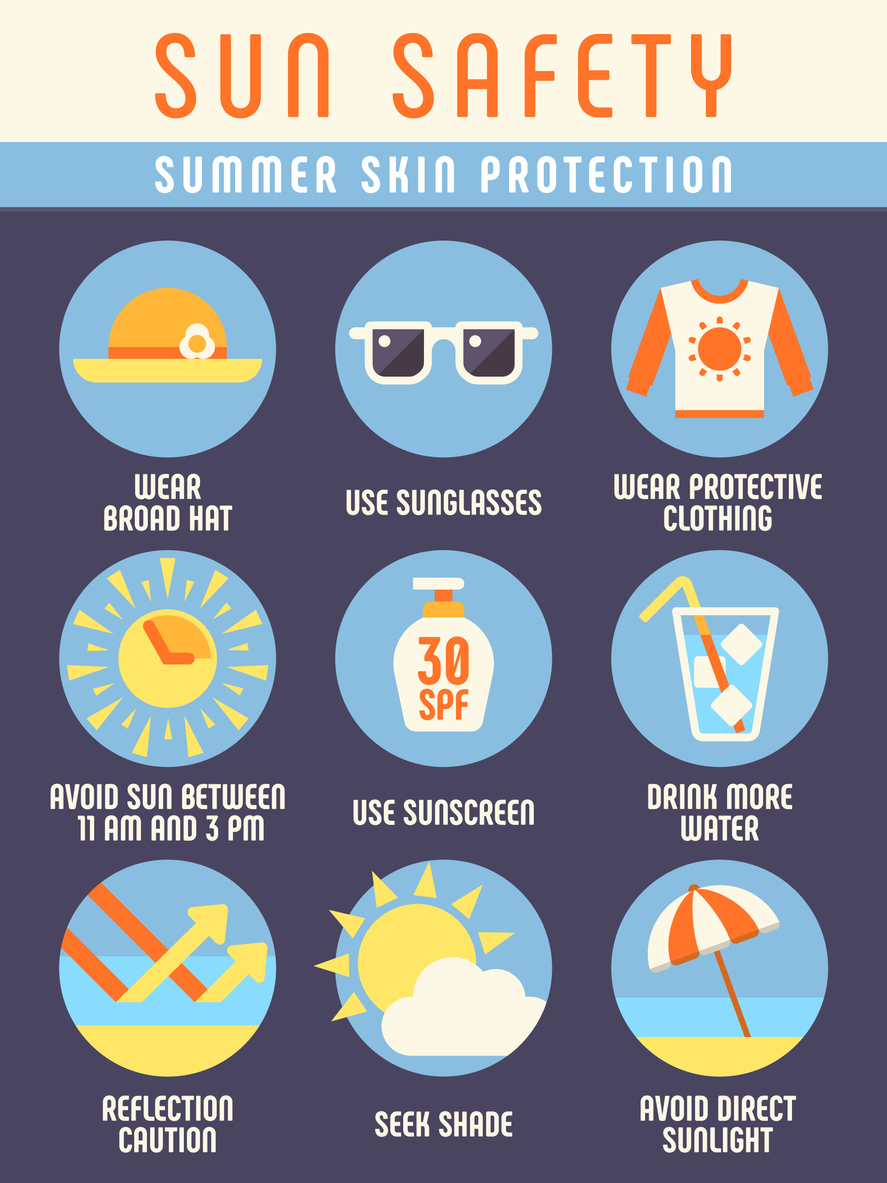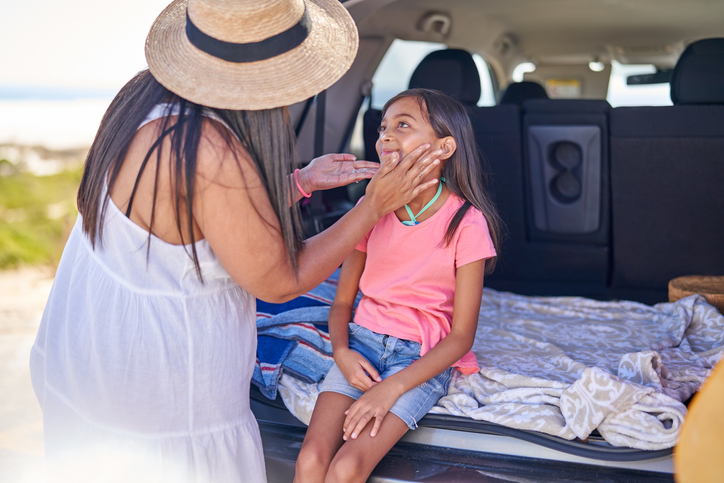When I moved out West, I had no idea that sunburns would be one of my most memorable souvenirs from weekends spent exploring Northern California. After putting my skin through the ringer, I was determined to have good sun protection while on the go. I opted to keep a bottle of SPF 30 within arm’s reach in my car. But, I wondered, is my vehicle an OK place to store sunscreen?
Sutter Pacific Medical Foundation dermatologist Joseph Chao, M.D., says no. “Bottles of sunscreen should not be left in cars,” he says.
Dr. Chao explains that sunscreens, particularly chemical sunscreens with active ingredients like oxybenzone and avobenzone, can degrade with exposure to high temperatures from sitting in the car, particularly during sunny months.
“This leads to inadequate protection from harmful UV light and subsequent sun burns, which is a risk factor for skin cancer development,” says Dr. Chao.
Pro tip: Even when you’re at places like the beach, wrap bottles of sunscreen in a towel or leave them in the shade where they aren’t exposed to direct sun and heat.
Read more: Should you store sunscreen in your car this summer? Here’s what experts say
Sunscreen options
When it comes to sunscreen, people have two options: mineral/physical versus chemical.
A physical sunscreen is made up of natural compounds like zinc oxide and titanium dioxide that sit on the skin’s surface. Physical sunscreens reflect sunlight so that UV (ultraviolet) radiation does not penetrate the epidermis, the skin’s outermost layer.
On the other hand, a chemical sunscreen is a mixture of chemicals that absorb UVA and UVB rays before they can penetrate the skin. They absorb harmful UV rays and create a chemical reaction that transforms UV rays into heat, which then gets released from the skin. Because they absorb the UV light they are consumed in the process and do not offer any more sun protection thereafter. Therefore, it is even more important to reapply chemical sunscreens often says Dr. Chao.
Whichever you choose, ensure you are picking a sunscreen that says “broad spectrum” on the label. Broad spectrum sunscreen offers protection from both UVA and UVB radiation, which are rays that cause fine lines and wrinkles and also those that may lead to skin cancer.
The US Food and Drug Administration recommends using at least a shot glass–sized amount from head to toe on uncovered skin and reapplying every two hours, even on cloudy days. Even more frequent applications are encouraged if you’re sweating or jumping in and out of water.
Strategies for smart sun protection
If you’re wondering which is preferred – spray or cream – Dr. Chao says spray sunscreens can be as effective as cream, but a common misconception is that you do not need to rub spray sunscreen in.
“For all sunscreens to be effective, you must rub them in after application,” emphasizes Dr. Chao.
He says a 20- to 30-minute activation period is recommended prior to sun exposure to optimize chemical sunscreen efficacy. “It’s important to read the label and follow the application instructions,” says Dr. Chao.
As for the level of SPF, literally meaning sun protection factor, does a higher number mean better?
Dr. Chao says that technically 100% of UV light is either reflected or absorbed by mineral or chemical sunscreens at an SPF of 30. “While there may be a theoretical slight increase of time protected with higher SPF (say SPF 50), the most important way to protect yourself is through frequent re-applications. Sunscreens with zinc oxide or titanium dioxide can make the skin appear white or gray, but they may offer slightly better protection than chemical sunscreens and are currently considered reef safe,” says Dr. Chao.
“Not only is sunscreen effective in preventing skin cancer, but it is also the only proven product to slow down sun-related aging of the skin,” he says.
Sun safety is always in season
No matter the weather, it’s important to protect your skin from sun damage throughout the year.
In addition to using sunscreen, Dr. Chao recommends wearing UPF (ultraviolet protection factor) long-sleeved clothing and a wide-brimmed hat for daily protection from direct sunlight exposure.






